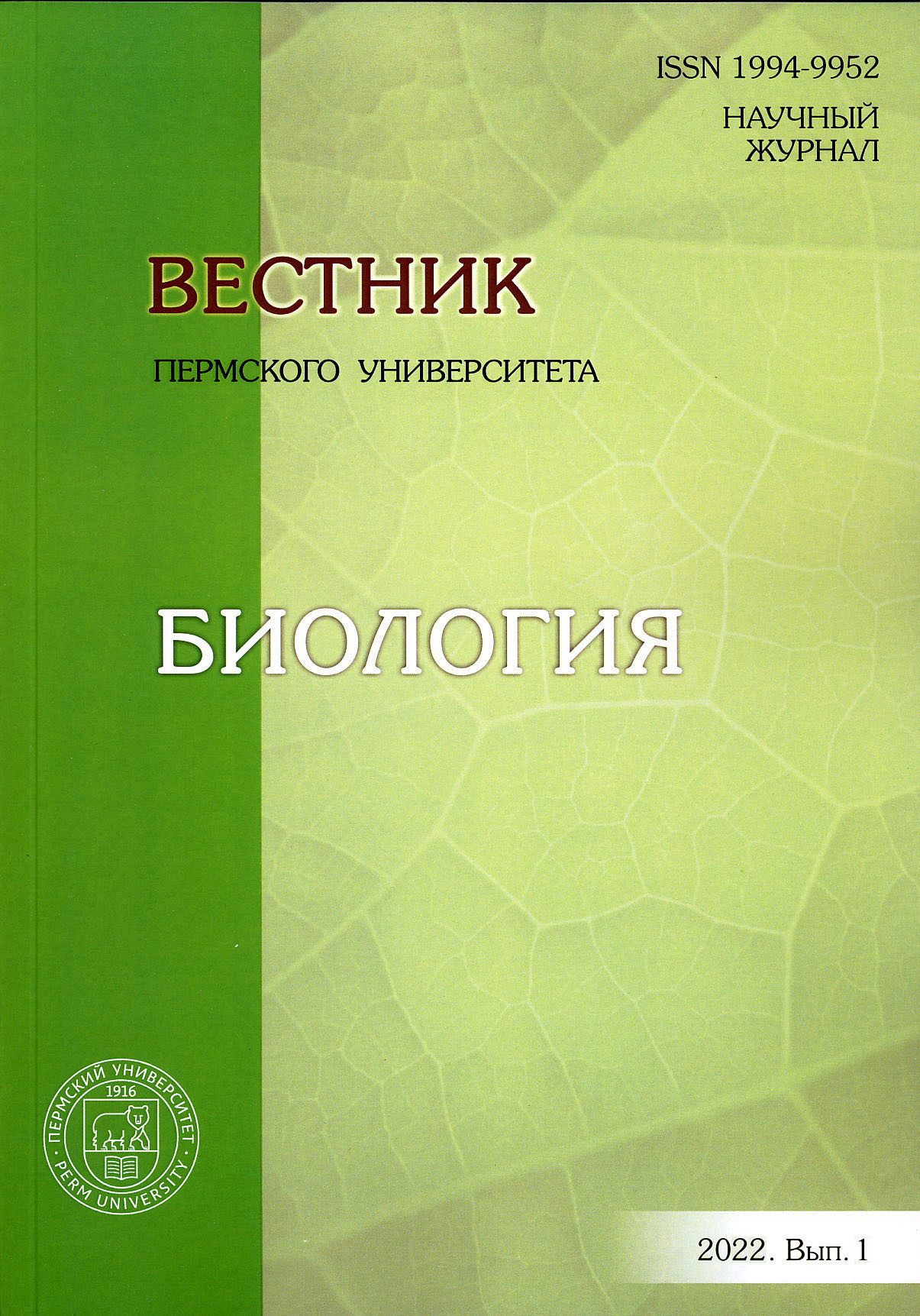Review of the methods of genetic differentiation of pseudotuberculosis pathogen strains
Main Article Content
Abstract
Article Details
References
Бургасова О.А. Клинико-патогенетические аспекты поражений суставов возбудителями бактериальной природы, совершенствование лабораторной диагностики, подходы к терапии: автореф. дис. … д-ра мед. наук. М., 2011. 41 с.
Бургасова О.А. и др. Влияние факторов патогенности Y. pseudotuberculosis на развитие поражений опорно-двигательного аппарата в виде реактивных артритов // Инфекционные болезни. 2009. Т. 7, № 4. С. 33‒36.
Водопьянов А.С. и др. Разработка метода дифференцировки Yersinia pestis и Yersinia pseudotuberculosis на основе INDEL-маркеров // Современные аспекты изучения особо опасных и других инфекционных заболеваний: материалы науч.-практ. конф. Ростов-на-Дону, 2014. С. 147‒150.
Водопьянов А.С. и др. Indel-типирование штаммов Vibrio cholerae // Эпидемиология и инфекционные болезни. 2017. № 4. С. 195‒200.
Евсеева В.В. и др. Типирование Yersinia pseudotuberculosis с помощью мультилокусного анализа вариабельного числа тандемных повторов // Проблемы особо опасных инфекций. 2015. № 4. С. 55‒57.
Каримова Т.В. Энтеропатогенные иерсинии: микробиологический мониторинг, молекулярно-биологические особенности, алгоритм лабораторной диагностики: автореф. дис. … канд. мед. наук. Ир-кутск, 2017. 22 с.
Каримова Т.В., Климов В.Т., Чеснокова М.В. Молекулярно-биологическая характеристика Yersinia pseudotuberculosis и Yersinia enterocolitica, выделенных в Сибири и на Дальнем Востоке // Бюллетень ВСНЦ СО РАМ. 2016, Т. 1, № 3 (109). Ч. 1. C. 60‒64.
Климов В.Т., Чеснокова М.В. Молекулярно-генетический мониторинг на основе ПЦР О-генотипирования // Молекулярная генетика. 2007. № 4. С. 14‒17.
Кокорина Г.И. Генотипы штаммов Yersinia pseudotuberculosis и их клиническое и диагностическое значение: дис. … канд. мед. наук. СПб., 2013. 142 с.
Пат. RU2736649С1 Российская Федерация, МПК C12N1/00, C12Q1/68. Способ генетической диф-ференциации штаммов Yersinia pseudotuberculosis путем молекулярно-генетического типирования / А.Л. Трухачев, М.Г. Мелоян, А.С. Водопьянов и др.; заявитель и патентообладатель ФКУЗ "Ростовский-на-Дону ордена трудового Красного Знамени научно-исследовательский противочумный институт". № 2019145645; заявл. 30.12.2019; опубл. 19.11.2020.
Сомова Л.М. и др. Плазмид-ассоциированная вирулентность Yersinia pseudotuberculosis и инфекционный процесс // Журнал микробиологии, эпидемиологии и иммунобиологии. 2016. № 6. C. 74‒85.
Шестакова М.Д. и др. Диагностическая и лечебная тактика при абдоминальной форме иерсиниозов у детей // Педиатрия. 2012. № 4. C. 37‒42.
Шубин Ф.Н. Экологические и молекулярно-биологические аспекты эпидемиологии псевдотуберкулёза: автореф. дис. … д-ра мед. наук. М., 1993. 40 с.
Шурыгина И.А. и др. Псевдотуберкулез. Новосибирск: Наука, 2003. 320 с.
Amphlett A. Far East Scarlet-Like Fever: A Review of the Epidemiology, Symptomatology, and Role of Superantigenic Toxin: Yersinia pseudotuberculosis-Derived Mitogen A. // Open Forum Infect Dis. 2015. Vol. 3: ofv202.
Bogdanovich T. et al. Use of O-antigen gene cluster-specific PCRs for the identification and O-genotyping of Yersinia pseudotuberculosis and Yersinia pestis. // Journal of Clinical Microbiology. 2003. Vol. 41. P. 5103‒5112.
Ch'ng S.L. et al. Population structure and evolution of pathogenicity of Yersinia pseudotuberculosis. // Applied and Environmental Microbiology. 2011. Vol. 77. P. 768‒775.
Duan R. et al. Homology analysis of pathogenic Yersinia species Yersinia enterocolitica, Yersinia pseudotuberculosis, and Yersinia pestis based on multilocus sequence typing // Journal of Clinical Microbiology. 2014. Vol. 52(1). P. 20‒29.
EFSA (European Food Safety Authority) and ECDC (European Centre for Disease Prevention and Con-trol), 2016. The European Union summary report on trends and sources of zoonoses, zoonotic agents and food-borne outbreaks in 2015 // EFSA Journal. 2016. Vol. 14. 231 p.
Fukushima H. et al. Geographical heterogeneity between Far Eastern and Western countries in prevalence of the virulence plasmid, the superantigen Yersinia pseudotuberculosis-derived mitogen and the high-pathogenicity island among Yersinia pseudotuberculosis strains // Journal of Clinical Microbiology. 2001. Vol. 39(10) P. 3541‒3547.
Halkilahti J., Haukka K., Siitonen A. Genotyping of outbreak-associated and sporadic Yersinia pseudo-tuberculosis strains by novel multilocus variable-number tandem repeat analysis (MLVA) // Journal of Microbiological Methods. 2013. Vol. 95(2). P. 245‒250.
Kenyon J.J., Cunneen M.M., Reeves P.R. Genetics and evolution of Yersinia pseudotuberculosis O-specific polysaccharides: a novel pattern of O-antigen diversity // FEMS microbiology reviews. 2017. Vol. 41(2). P. 200–217.
Laukkanen-Ninios R. et al. Population structure of the Yersinia pseudotuberculosis complex according to multilocus sequence typing // Environmental Microbiology. 2011. Vol. 13. P. 3114‒3127.
Le Flèche P. et al. A tandem repeats database for bacterial genomes: application to the genotyping of Yersinia pestis and Bacillus anthracis // BMC Microbiology. 2001. 1:2.
Niskanen T. et al. Characterization of non-pathogenic Yersinia pseudotuberculosis-like strains isolated from food and environmental samples // International Journal of Food Microbiology. 2009. Vol. 129. P. 150‒156.
Savin C. et al. The Yersinia pseudotuberculosis complex: characterization and delineation of a new spe-cies, Yersinia wautersii // International Journal of Food Microbiology. 2014. Vol. 304. P. 452‒463.
Souza R.A. et al. Molecular typing of Yersinia pseudotuberculosis strains isolated from livestock in Bra-zil // Genetics and Molecular Research. 2013. Vol. 12. P. 4869‒4878.
Thal E., Knapp W. A revised antigenic scheme of Yersinia pseudotuberculosis // Progress in Immunologic Standardization. 1971. Vol. 15. P. 219–222.
Voskresenskaya E. et al. Evaluation of ribotyping as a tool for molecular typing of Yersinia pseudotuberculosis strains of worldwide origin // Journal of Clinical Microbiology. 2005. Vol. 43. P. 6155‒6160.
Voskresenskaya E. et al. Typing and clustering of Yersinia pseudotuberculosis isolates by restriction fragment length polymorphism analysis using insertion sequences. // Journal of Clinical Microbiology. 2014. Vol. 52. P. 1978‒1989.




